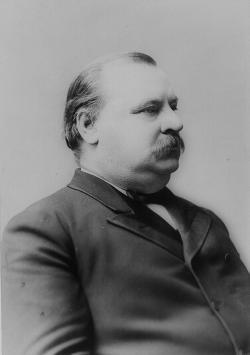The nation will observe Labor Day this coming Monday, allowing millions to enjoy the waning days of summer, as well their last chance to wear white pants without earning a “tsk tsk” from Miss Manners. How did this early September holiday get its start?
Though President Grover Cleveland declared Labor Day a national holiday in 1894, the occasion was first observed on Sept. 5, 1882, in New York City. A parade was organized by the city’s Central Labor Union, a branch of the Noble Order of the Knights of Labor, a secretive labor union founded in 1869 by a clique of Philadelphia tailors. Historians still debate over whom, specifically, to credit with the idea of a holiday dedicated to the workingman. Some say that Labor Day was the brainchild of Peter J. McGuire, co-founder of the American Federation of Labor. Others argue that Matthew Maguire, the CLU’s secretary, was the holiday’s mastermind and that he doesn’t receive proper credit because he ticked off the mainstream labor movement by running for vice president on the National Socialist Labor Party ticket in 1896.
According to Ted Watt’s The First Labor Day Parade, the September date was chosen because it coincided with a Knights of Labor conference in New York, thus guaranteeing a sizable turnout for the festivities. Though the event wasn’t particularly festive, at least by today’s standards: It resembled a protest far more than a parade, with CLU members required to march in support of the eight-hour workday. (Those who ditched faced fines.)
The CLU held the event again the following year on the same date. In 1884, however, the organization shifted gears and mandated that Labor Day take place annually on the first Monday in September. In 1887, Oregon became the first state to make Labor Day an official holiday, with Colorado, Massachusetts, New Jersey, and New York quickly following suit.
For a while, Labor Day had stiff competition from May 1. In 1884, the American Federation of Organized Trades and Labor Unions declared that, by May 1, 1886, the eight-hour workday should be in effect across the land. When legislators and employers failed to comply in time, the result was a general strike and the bloody Haymarket Riot in Chicago, which caused the deaths of eight police officers and led to the hangings of four labor activists.
Bonus Explainer: May 1 wasn’t forgotten, however. In the 1920s, it became known in the United States as Loyalty Day, and it’s still observed with an annual presidential proclamation that asks all government officials to take the not-so-outlandish step of flying the U.S. flag above their buildings.
